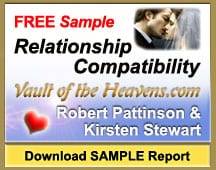Astrology is a vast subject. You can study it for all of your life, and there will still be more to learn. Astrology is called the Science of Light because it sheds light on our path, especially when we are at a crossroads, in a crisis, or during change.
I’ve found astrology to be profoundly healing and endlessly fascinating, as fascinating as people are! It was a long process getting to where I am today and I’ve studied many different types of astrology. Below is the astrology I currently use and what I use it for when you get a reading with me.
Natal Astrology or Birth Chart Astrology
Natal Astrology is the astrology most people are familiar with, and the first type of astrology most students of astrology learn. There are more types of natal astrology than I could list here, so I’ll just tell you what kinds of natal astrology I currently use. (I’m a lifelong student of astrology).
Your birth chart contains your personal blueprint for your life. Who you are, who you will become, your work, your companions along the way, and provides a perspective that nothing else can offer. Jaimini Vedic astrology is the most reliable technique for career and for showing what a person is and what they will be in this life.
Jaimini astrology indicates so much about a person that I have another page dedicated to it on my site here. I use it mostly for career determination, timing, seeing who a person is, skills, talents, spiritual path, the spouse, family members including children, some health, and more.
The Avashtas (Vedic Psychological Astrology)
People Google phrases like “Moon conjunct Saturn,” or “Saturn conjunct Venus,” or “Rahu with the Moon,” or “Ketu with the Sun,” etc., to find out what they mean. These are all Avashtas (planetary conditions) that explain the psychology of a person and why they do what they do.
The Avashtas (of which there are many types) is a profound form of astrological psychology. It’s essential for determining relationship skills (or lack of relationship skills), and what kinds of experiences you’ll have in every area of life.
The Avashtas indicate our mental, emotional, spiritual, and even physical, blueprint. Once you understand this blueprint, you can consciously make positive changes to it through your habits and mindset upgrades. The way we think, the ideas we hold dear to our hearts, ideas we may not be consciously aware of, determines our mental health and even our physical health.
Ashtakavarga Astrology
Ashtakavarga is what I use to see what kind of experience you’ll have in your Sadi Saturn period, The Sadi Saturn transit is that dreaded seven-year period that everyone fears when they learn about it. But, it’s not always a painful experience, and it’s not the same for everyone. Ashtakavarga astrology is a Vedic transit technique based on the natal and transiting positions of planets from each other.
I use it for other things, too, like the best colors to use in various areas of your home to increase the positive effects of a particular planet.
Muhurta Astrology
Muhurta astrology is for choosing the best time to get married, start a business, starting a writing project, and more. Unfortunately, you can’t just choose the best date to play the lottery, for instance, and expect to win millions of dollars if your birth chart doesn’t show that kind of wealth. I know! I was disappointed to find that out too.
But, it’s excellent for narrowing down dates and times when you’re choosing a wedding day that is astrologically supportive of marriage. Did you know you can even do a Muhurta for trimming your hair and beard?
Horary Astrology
Clients kept asking me questions that I couldn’t answer with their birth charts and I nearly quit doing astrology because of it. Luckily, I discovered Horary astrology! Horary astrology used to be the mainstay of ancient astrologers and is fast becoming a cornerstone practice for modern astrologers.
The type of Horary astrology I use is the traditional western Horary based on the work of William Lilly, the 17th-century English astrologer. I learned it from John Frawley, the modern master of the art.
Horary is the most useful, practical, and quick form of astrology that I use on a daily basis. Learn more about the astonishing art of Horary Astrology and see many sample questions.
The Tropical vs. Sidereal Zodiac Controversy
“The only difference between western and Vedic astrology is techniques.” – Ernst Wilhelm
Many think that the tropical zodiac is the same as modern western astrology and that the sidereal zodiac is synonymous with Vedic astrology. This is not true. Many “western” astrologers use the sidereal zodiac, and many Vedic astrologers use the tropical zodiac (for many, but not all, Vedic techniques).
The tropical zodiac is based on the Sun’s path through the seasons of the year. When the Sun enters certain signs, in fact, that is when a season begins. There is much to say about this technical aspect of astrology, and I’ll attach a PDF at the end of this page to read more about it.
The article is written by Ernst Wilhelm who extensively researched, and statistically tested, both zodiacs for accuracy. The Vedic techniques used with the tropical zodiac are at least 85% accurate and consistent; this is why I use the tropical zodiac.
I still use the sidereal zodiac for Vedic nakshatra techniques (the nakshatras are the 27 mansions of the Moon), especially for relationships. The Vedic Compatibility technique is based on the lunar mansions of the Moon (also known as the nakshatras). These “mansions” are built around the star constellations, not the 12 signs of the zodiac. I have a page on my site dedicated to this renowned relationship technique.
If You Are New to Astrology
If you are new to astrology, I invite you to begin your life-long love affair with this Science of Light and the incomparable path to self-knowledge and spiritual growth that it provides.
RELATED:
https://divinetimeastrology.com/what-is-horary-astrology/
https://divinetimeastrology.com/whole-life-basic-consultation/




